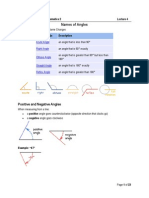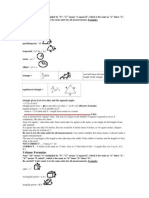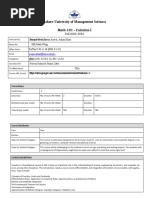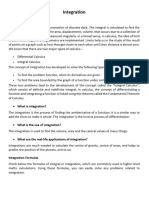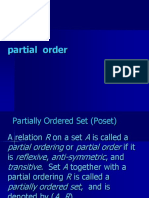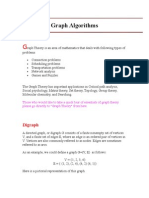Tip Formulas
Uploaded by
Faheem JaniTip Formulas
Uploaded by
Faheem JaniDerivatives and Antiderivatives f (x), g(x) are functions and C, n, k are constants (and k 6= 0).
Derivatives ZAntiderivatives
dC
=0 0dx = C
dx
Z Z
d
(kf (x)) = kf 0 (x) kf (x)dx = k f (x)dx
dx
Z Z Z
d
(f (x) ± g(x)) = f 0 (x) ± g 0 (x) (f (x) ± g(x))dx = f (x)dx ± g(x)dxdx
dx
dxn xn+1
Z
= nxn−1 xn dx = + C (n 6= −1)
dx n+1
dex
Z Z
d ln x 1 dx
= ex , = x x
e dx = e + C, = ln |x| + C
dx dx x x
Z
d sin x
= cos x cos xdx = sin x + C
dx
Z
d cos x
= − sin x sin xdx = − cos x + C
dx
Z
d tan x
= sec2 x sec2 xdx = tan x + C
dx
Z
d cot x
= − csc2 x csc2 xdx = − cot x + C
dx
Z
d sec x
= sec x tan x sec x tan xdx = sec x + C
dx
Z
d csc x
= − csc x cot x csc x cot xdx = − csc x + C
dx
Chain rule and substitution technique
Z
df (u(x))
= f 0 (u(x))u0 (x) ⇐⇒ f 0 (u(x))u0 (x)dx = f (u(x)) + C.
dx
Derivatives Antiderivatives
d(ax + b)n (ax + b)n+1
Z
= an(ax + b)n−1 (ax + b)n dx = + C (n 6= −1, a 6= 0))
dx a(n + 1)
d[u(x)]n [u(x)]n+1
Z
= n[u(x)]n−1 u0 (x) [u(x)]n u0 (x)dx = + C (n 6= −1)
dx n+1
u0 (x)
Z 0
deu(x)
Z
d ln u(x) u (x)
= eu(x) u0 (x), = eu(x) u0 (x)dx = eu(x) + C, = ln |u(x)| + C
dx dx u(x) u(x)
Z
d sin(u(x))
= cos(u(x))u0 (x) cos(u(x))u0 (x)dx = sin(u(x)) + C
dx
Z
d cos(u(x))
= − sin(u(x))u0 (x) sin(u(x))u0 (x)dx = − cos(u(x)) + C
dx
Z
d tan(u(x))
= sec2 (u(x))u0 (x) sec2 (u(x))u0 (x)dx = tan(u(x)) + C
dx
Z
d cot(u(x))
= − csc2 (u(x))u0 (x) csc2 (u(x))u0 (x)dx = − cot(u(x)) + C
dx
Z
d sec(u(x))
= sec(u(x)) tan(u(x))u0 (x) sec(u(x)) tan(u(x))u0 (x)dx = sec(u(x)) + C
dx
Z
d csc(u(x))
= − csc(u(x)) cot(u(x))u0 (x) csc(u(x)) cot(u(x))u0 (x)dx = − csc(u(x)) + C
dx
You might also like
- Answers of The Year 10 Mathematics TextbookNo ratings yetAnswers of The Year 10 Mathematics Textbook138 pages
- Username Passw - Not A Member? Please: Top of Form 8552297aa84734 9 - 2 1100% (1)Username Passw - Not A Member? Please: Top of Form 8552297aa84734 9 - 2 113 pages
- Ganit Prabhutva-2019 - 20200126095120 PDFNo ratings yetGanit Prabhutva-2019 - 20200126095120 PDF8 pages
- Answers of Inverse Trigonometric Functions TEST - 01No ratings yetAnswers of Inverse Trigonometric Functions TEST - 011 page
- 12 Maths Key Notes CH 02 Inverse Trigonometric FunctionsNo ratings yet12 Maths Key Notes CH 02 Inverse Trigonometric Functions4 pages
- Math Formulas For Class 12: Type Your SearchNo ratings yetMath Formulas For Class 12: Type Your Search7 pages
- Edexcel IAS Pure MathematicsP1-P2 WMA11-WMA12 Formula SheetNo ratings yetEdexcel IAS Pure MathematicsP1-P2 WMA11-WMA12 Formula Sheet17 pages
- AMRITA VISHWA VIDYAPEETHAM - MCA Entrance Examination Sample Paper100% (1)AMRITA VISHWA VIDYAPEETHAM - MCA Entrance Examination Sample Paper6 pages
- Revised GCSE MATH REVISED Specimen Assessment Materials 2017 21073 PDFNo ratings yetRevised GCSE MATH REVISED Specimen Assessment Materials 2017 21073 PDF268 pages
- VCE Unit 1 Physics Notes - Temperature and HeatNo ratings yetVCE Unit 1 Physics Notes - Temperature and Heat2 pages
- MYP 5 Math Std Sample Paper for Mocks (XJ9VPK)100% (2)MYP 5 Math Std Sample Paper for Mocks (XJ9VPK)53 pages
- Beyond On Symmetrical Algebraic ExpressionsNo ratings yetBeyond On Symmetrical Algebraic Expressions9 pages
- Maths Mania # 065: DIRECTIONS: For The Following Questions, Four Options Are Given. Choose The Correct OptionNo ratings yetMaths Mania # 065: DIRECTIONS: For The Following Questions, Four Options Are Given. Choose The Correct Option4 pages
- Chapter 13 - Curve Sketching & Polynomials100% (1)Chapter 13 - Curve Sketching & Polynomials33 pages
- Caie As Level Further Maths 9231 Further Pure 1 v2No ratings yetCaie As Level Further Maths 9231 Further Pure 1 v216 pages
- Principles of Math 12 - Transformations Practice Exam PDFNo ratings yetPrinciples of Math 12 - Transformations Practice Exam PDF23 pages
- The Birthday Polynomial Project Task: To Create, Characterize, Graph, and Present A Polynomial Function That Reflects You. ProcessNo ratings yetThe Birthday Polynomial Project Task: To Create, Characterize, Graph, and Present A Polynomial Function That Reflects You. Process2 pages
- Class 9 Mathematics Chapter Wise Topic Wise Notes Chapter 3 Coordinate GeometryNo ratings yetClass 9 Mathematics Chapter Wise Topic Wise Notes Chapter 3 Coordinate Geometry69 pages
- The Fractional Fourier Transform and Time-Frequency RepresentationsNo ratings yetThe Fractional Fourier Transform and Time-Frequency Representations8 pages
- Math2412 Double Angle Power Reducing Half Angle Identities PDFNo ratings yetMath2412 Double Angle Power Reducing Half Angle Identities PDF5 pages
- 05 - Finding A Special Pattern With Functions-2No ratings yet05 - Finding A Special Pattern With Functions-23 pages
- Math 101 Calculus-I - Fall Semester 22-23No ratings yetMath 101 Calculus-I - Fall Semester 22-235 pages
- 7 - Continuity and Differentiability PDFNo ratings yet7 - Continuity and Differentiability PDF16 pages
- Pre-Calculus Math 40s - Transformations Lesson 3No ratings yetPre-Calculus Math 40s - Transformations Lesson 313 pages
- vM0O0j3hZj-Opal---Mathematics-PT-06-Revision-AssignmentNo ratings yetvM0O0j3hZj-Opal---Mathematics-PT-06-Revision-Assignment20 pages
- Assignment 03 - Matrix Inverses and DeterminantsNo ratings yetAssignment 03 - Matrix Inverses and Determinants2 pages
- Question Bank-4 (B. Tech Vith Sem) : Math3600No ratings yetQuestion Bank-4 (B. Tech Vith Sem) : Math36007 pages
- Herbert Kreyszig, Erwin Kreyszig - Student Solutions Manual and Study Guide To Advanced Engineering Mathematics (Volume 2) - Wiley (2012)No ratings yetHerbert Kreyszig, Erwin Kreyszig - Student Solutions Manual and Study Guide To Advanced Engineering Mathematics (Volume 2) - Wiley (2012)2 pages
- DPP-Inequalities (Wavy Curve Method) BASICS - NEHA - 231102 - 180010No ratings yetDPP-Inequalities (Wavy Curve Method) BASICS - NEHA - 231102 - 1800106 pages
- Week 7 8 Graph of The Six Circular FunctionsNo ratings yetWeek 7 8 Graph of The Six Circular Functions51 pages















